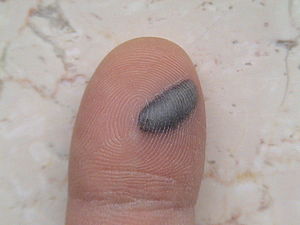Rowing Blisters and 3 Ways to Avoid Them – Part I
Rowers’ blisters are caused by either friction forming a water
blister or pinching forming a blood blister. There’s something going on
between your hands and the handle to give you blisters; we need to look
first at what you’re holding and then at how you’re holding it to see
how you’re wounding yourself.
What are your tips for keeping your handles in great shape?
Related posts:
A better handle on rowing?
Whatever your choice of handles – and gosh! aren’t there a lot to choose from – make sure they stay comfortable to hold.Keep handles clean
Tacky handles and greasy handles will keep you changing your grip as you row; greasy handles will have you squeezing to hold on; other lumps will give your hands something to rub against:- Wash the handles after every outing; use detergent to get rid of the grease and a sponge or cloth for the dirt and store them somewhere where they can dry easily
- Wash or wipe your hands after applying sunscreen
- Lay your blades down so that the handles are out of the mud, off the little bits of gravel and sand, away from the broken glass, not anywhere where the geese have been
Keep up with the maintenance
Any loose flaps, any holes, any splits, any rough seams, even a change in texture will provide a ridge for your hands to rub against:- Check your handles regularly for loose material that can be glued or rough patches that can be sanded smooth.
- Replace any grips that have holes or splits
- Fill and smooth chips or if they’re big, replace the handle
Choose to suit you
Size matters as does surface texture- Choose between large or small diameter – how big are your hands?
- Choose between hard and soft materials – what matters more: durability or comfort?
- Choose between textured and smooth – how much grip do you like to have? How rough is your water?
What are your tips for keeping your handles in great shape?
Related posts:



Δεν υπάρχουν σχόλια:
Δημοσίευση σχολίου